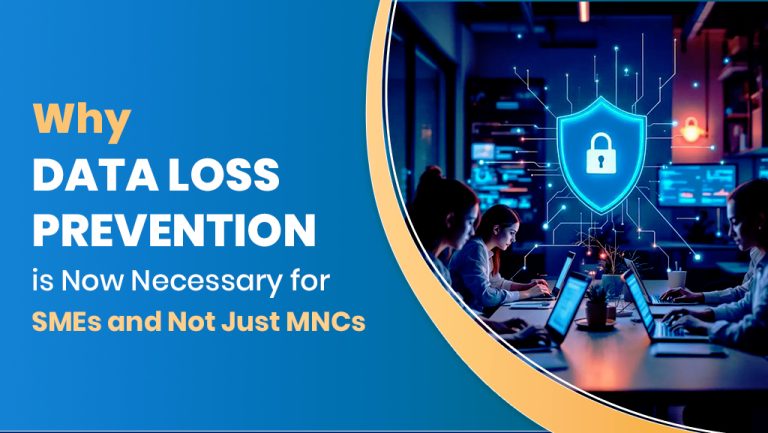


Protecting sensitive data has now become a huge issue for big businesses in today’s digitally driven environment. Cyber risks, data breaches, and other violations are rapidly targeting small and medium-sized businesses (SMEs). Therefore, it is very crucial for SMEs looking to protect their digital assets, to stay in compliance with regulations, and build the trust of their clients, to put in place a strong Data Loss Prevention (DLP) blueprint plan.
The term “Data Loss Prevention” means a collection of procedures, tools, and technologies that make sure private information isn’t misplaced, abused, or accessed by unauthorized parties. DLP solutions keep an eye on and manage data across endpoints, networks, and cloud environments when it’s in motion, at rest, and being used. DLP assists businesses in enforcing security standards and safeguarding sensitive data, including financial records, customer information, and intellectual property, by identifying, detecting, and stopping unlawful data transfers.
In contrast to popular belief, cyber criminals don’t only target large enterprises but also smaller organisations. SMEs often lack the same level of security resources and IT expertise, thereby making them easier and more lucrative targets. Small businesses are the target of over 43 percent of cyberattacks, according to the Verizon Data Breach Investigations Report. Data loss, harm to one’s reputation, and legal repercussions are common outcomes of these attacks.
Several risks include:
Industry rules like GDPR, HIPAA, PCI DSS, and India’s impending Digital Personal Data Protection Act are becoming more and more applicable to SMEs. DLP tools assist SMEs in creating audit trails, keeping an eye on data usage, and enforcing data security rules that adhere to these compliance requirements.
Data is accessed from several devices and places as more workers work remotely, raising the possibility of unintentional exposure. DLP gives SMEs the ability to manage data flow, implement encryption, and keep an eye on questionable activity on cloud platforms and distant endpoints.
Scalable and reasonably priced, modern DLP solutions are frequently offered as a component of managed security service provider (MSSP) packages. With the help of automatic response systems and centralized policy management, SMEs can adopt DLP without having to make significant upfront investments.
DLP solutions can identify odd data access or transfer patterns, warning IT departments about possible employee or third-party vendor abuse. Real-time alerts and behavioral analytics can prevent breaches before they become more serious.
SMEs should give top priority to features that fit their operational requirements and risk tolerance when choosing a DLP solution:
Velemento, a top supplier of IT infrastructure and security solutions, assists SMEs in putting enterprise-level DLP methods into practice that are appropriate for their size and financial constraints. Among our DLP offerings are:
Since data is essential to company operations, SMEs cannot afford to ignore its security. DLP has become essential for any firm handling sensitive data, not just large corporations. Businesses may lower risks, guarantee compliance, and establish a foundation of trust with stakeholders and consumers by using a scalable and intelligent Data Loss Prevention system.